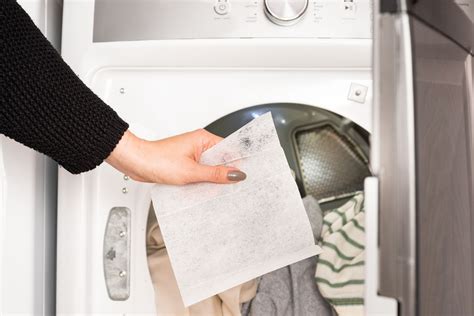Choosing the Right Setting
When it comes to drying your sheets in the dryer, selecting the appropriate setting is crucial. The first step is to check the care label on your sheets, as it will provide valuable information about the recommended drying method. Most sheets are safe to be dried in the machine, but the temperature and cycle options may vary. To avoid wrinkles and damage, opt for a low or medium heat setting. If your sheets are particularly delicate or made of a specialty fabric, such as silk or linen, consider using the delicate or air dry cycle.It's important to ensure that your dryer is in good working condition, as a malfunctioning machine can lead to uneven drying or damage to your sheets. Clean the lint trap before each drying cycle to prevent lint buildup, which can decrease the efficiency of the dryer and even become a fire hazard. Additionally, inspect the dryer vent for any blockages and clear them out regularly to promote optimal airflow.
Prepping Your Sheets for Drying
Before placing your sheets in the dryer, give them a gentle shake to remove any excessive wrinkles. Folding or rolling the sheets neatly can also help to prevent tangling and ensure even drying. If you're concerned about the fabric shrinking, you can opt to air dry them for a few minutes before transferring them to the dryer. This will help minimize the risk of shrinkage and maintain the size and shape of the sheets.
Drying Sheets in the Dryer
Place your prepared sheets into the dryer, being careful not to overload it. Overloading the dryer can prevent proper airflow and result in wrinkled or damp sheets. It's best to leave some extra space for the sheets to move around freely. Consider adding a clean, dry towel to the load, as this can help absorb excess moisture and reduce drying time.
Optimizing Drying Performance
To maximize the drying performance of your sheets, you can incorporate a few additional tricks. Tossing a couple of dryer balls or clean tennis balls into the dryer with your sheets can help to fluff them up and prevent excessive wrinkling. These balls bounce around during the drying process, separating the sheets and allowing better airflow. Alternatively, you can use a fabric softener sheet to reduce static and give your sheets a fresh scent.If you notice any wrinkles on your sheets after they've completed the drying cycle, you can quickly remove them with a handheld steamer or a warm iron. Be sure to read the care instructions on your sheets to determine the appropriate ironing temperature and setting.
Caring for Your Dried Sheets
Once your sheets are dry and wrinkle-free, promptly remove them from the dryer to prevent further wrinkling. Immediately fold and store them or make the bed with the freshly dried sheets. If you prefer to iron them before use, follow the proper ironing instructions based on the fabric type to avoid overheating or damaging the sheets.Remember to regularly clean and maintain your dryer to ensure optimal drying performance and extend its lifespan. By taking proper care of your sheets and the dryer, you can enjoy soft, fresh, and perfectly dried sheets every time.

Semantic Keywords: drying sheets, dryer settings, care label, delicate fabric, air dry, wrinkles, lint trap, dryer vent, even drying, shrinking fabric, drying performance, dryer balls, fabric softener, wrinkles removal, ironing instructions, maintenance.
No comments:
Post a Comment